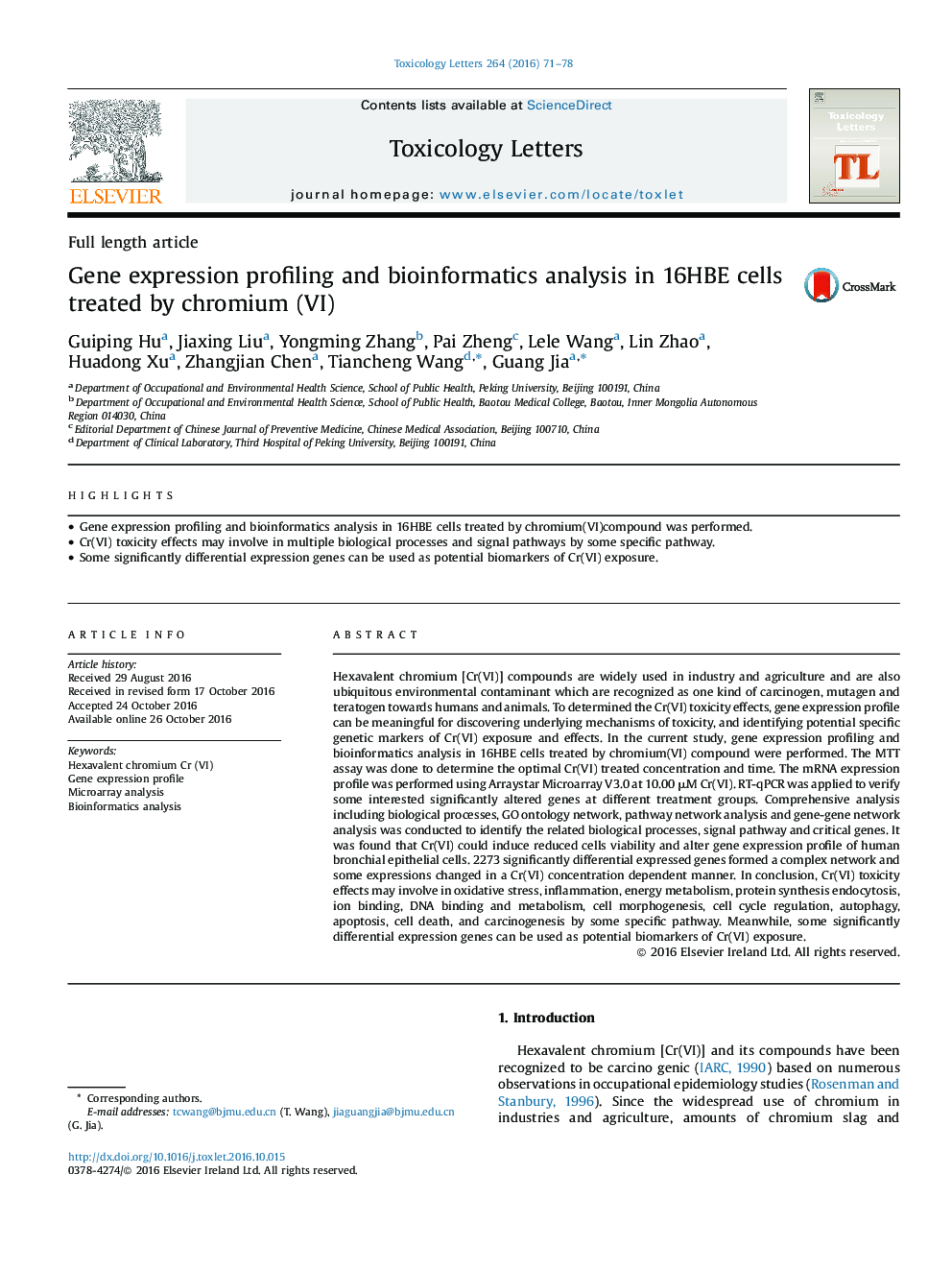| کد مقاله | کد نشریه | سال انتشار | مقاله انگلیسی | نسخه تمام متن |
|---|---|---|---|---|
| 5562289 | 1562609 | 2016 | 8 صفحه PDF | دانلود رایگان |

- Gene expression profiling and bioinformatics analysis in 16HBE cells treated by chromium(VI)compound was performed.
- Cr(VI) toxicity effects may involve in multiple biological processes and signal pathways by some specific pathway.
- Some significantly differential expression genes can be used as potential biomarkers of Cr(VI) exposure.
Hexavalent chromium [Cr(VI)] compounds are widely used in industry and agriculture and are also ubiquitous environmental contaminant which are recognized as one kind of carcinogen, mutagen and teratogen towards humans and animals. To determined the Cr(VI) toxicity effects, gene expression profile can be meaningful for discovering underlying mechanisms of toxicity, and identifying potential specific genetic markers of Cr(VI) exposure and effects. In the current study, gene expression profiling and bioinformatics analysis in 16HBE cells treated by chromium(VI) compound were performed. The MTT assay was done to determine the optimal Cr(VI) treated concentration and time. The mRNA expression profile was performed using Arraystar Microarray V3.0 at 10.00 μM Cr(VI). RT-qPCR was applied to verify some interested significantly altered genes at different treatment groups. Comprehensive analysis including biological processes, GO ontology network, pathway network analysis and gene-gene network analysis was conducted to identify the related biological processes, signal pathway and critical genes. It was found that Cr(VI) could induce reduced cells viability and alter gene expression profile of human bronchial epithelial cells. 2273 significantly differential expressed genes formed a complex network and some expressions changed in a Cr(VI) concentration dependent manner. In conclusion, Cr(VI) toxicity effects may involve in oxidative stress, inflammation, energy metabolism, protein synthesis endocytosis, ion binding, DNA binding and metabolism, cell morphogenesis, cell cycle regulation, autophagy, apoptosis, cell death, and carcinogenesis by some specific pathway. Meanwhile, some significantly differential expression genes can be used as potential biomarkers of Cr(VI) exposure.
Journal: Toxicology Letters - Volume 264, 15 December 2016, Pages 71-78